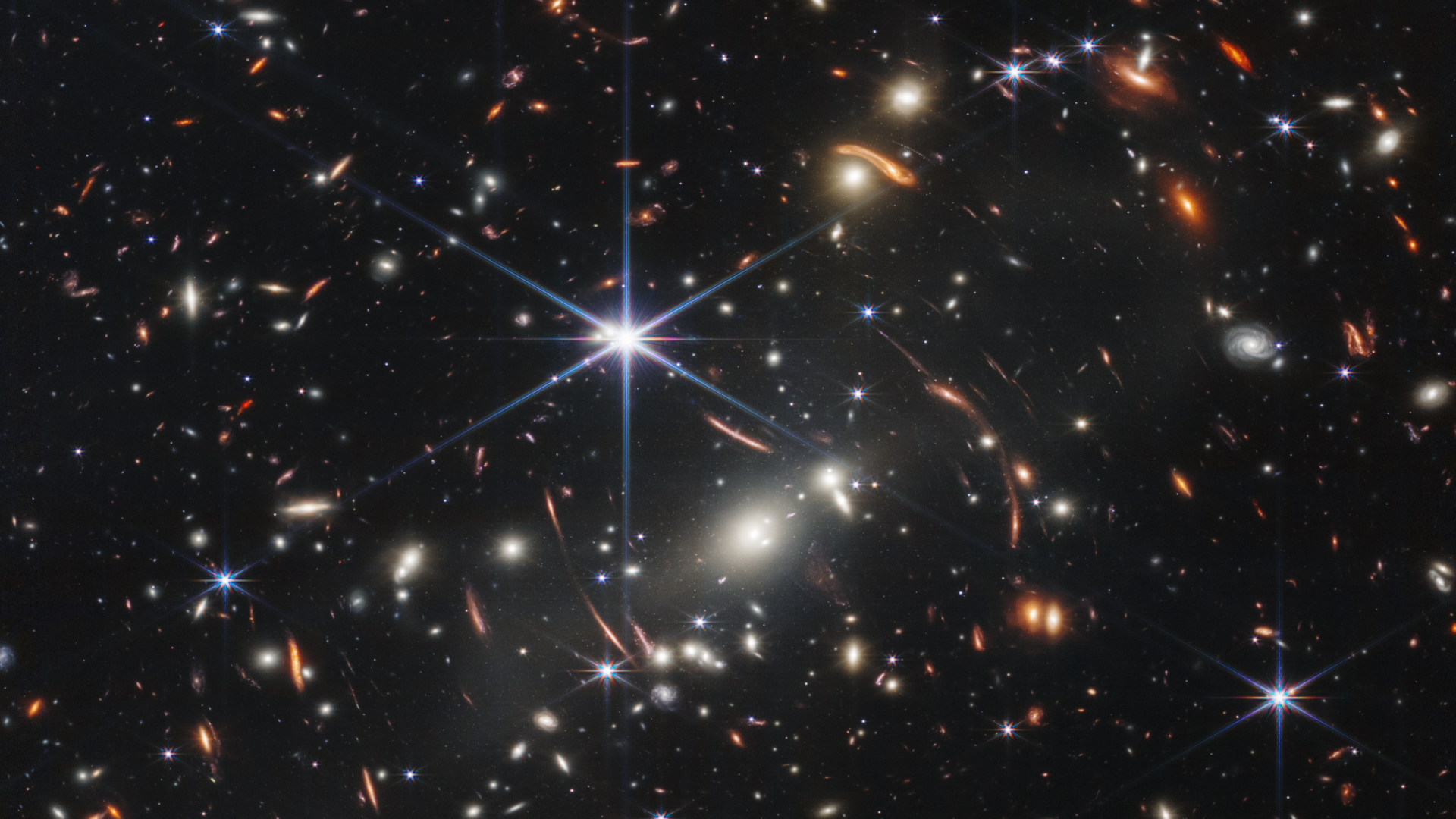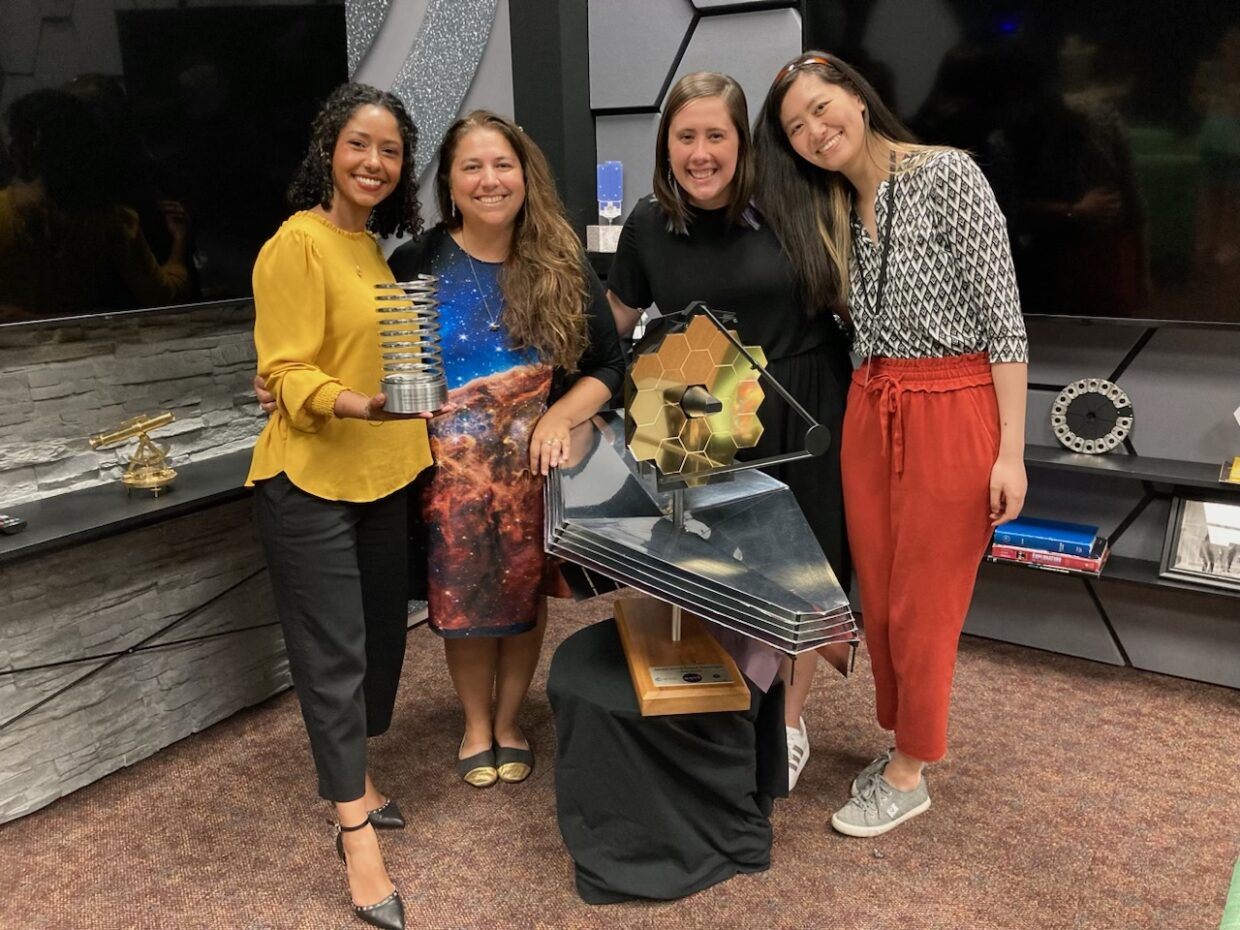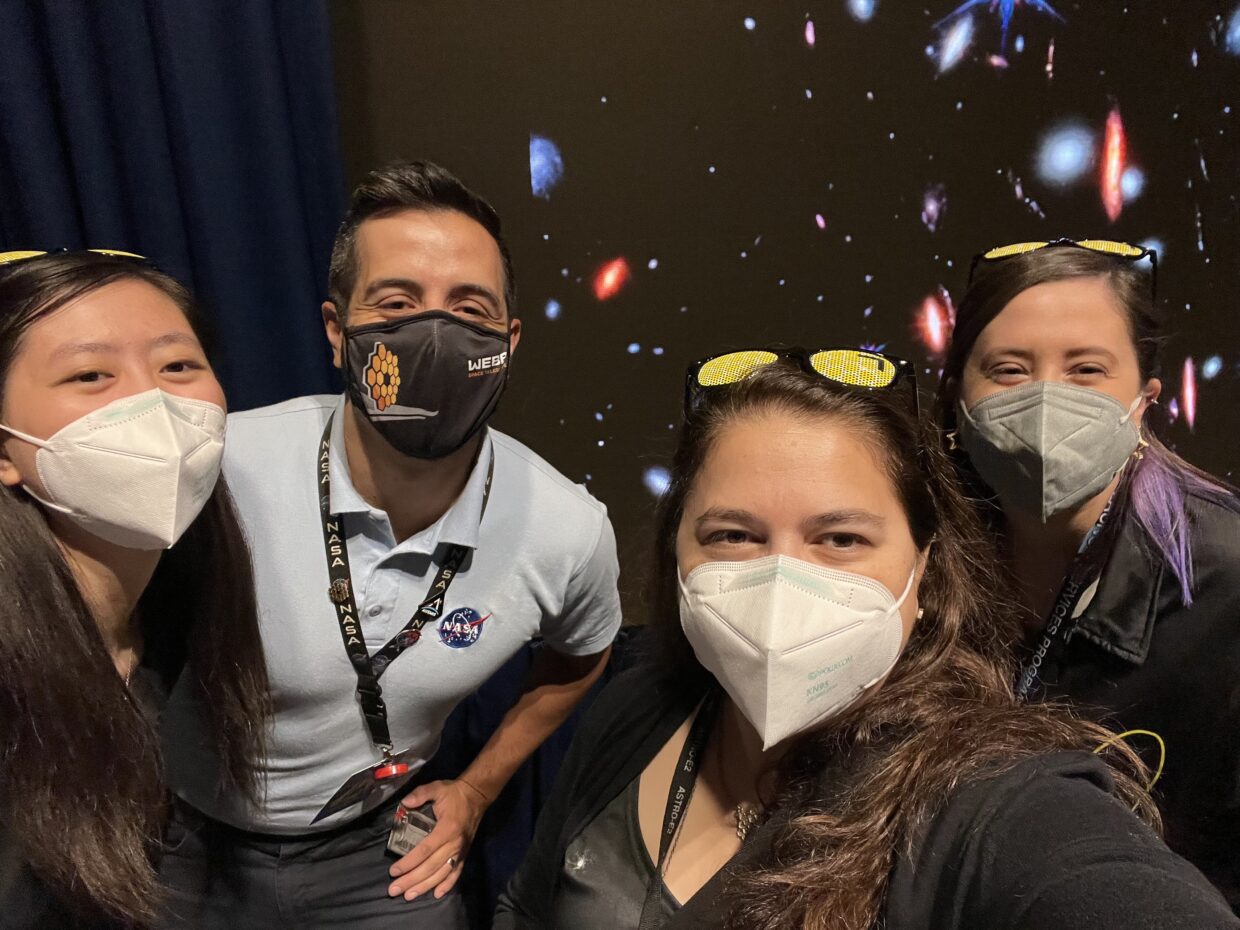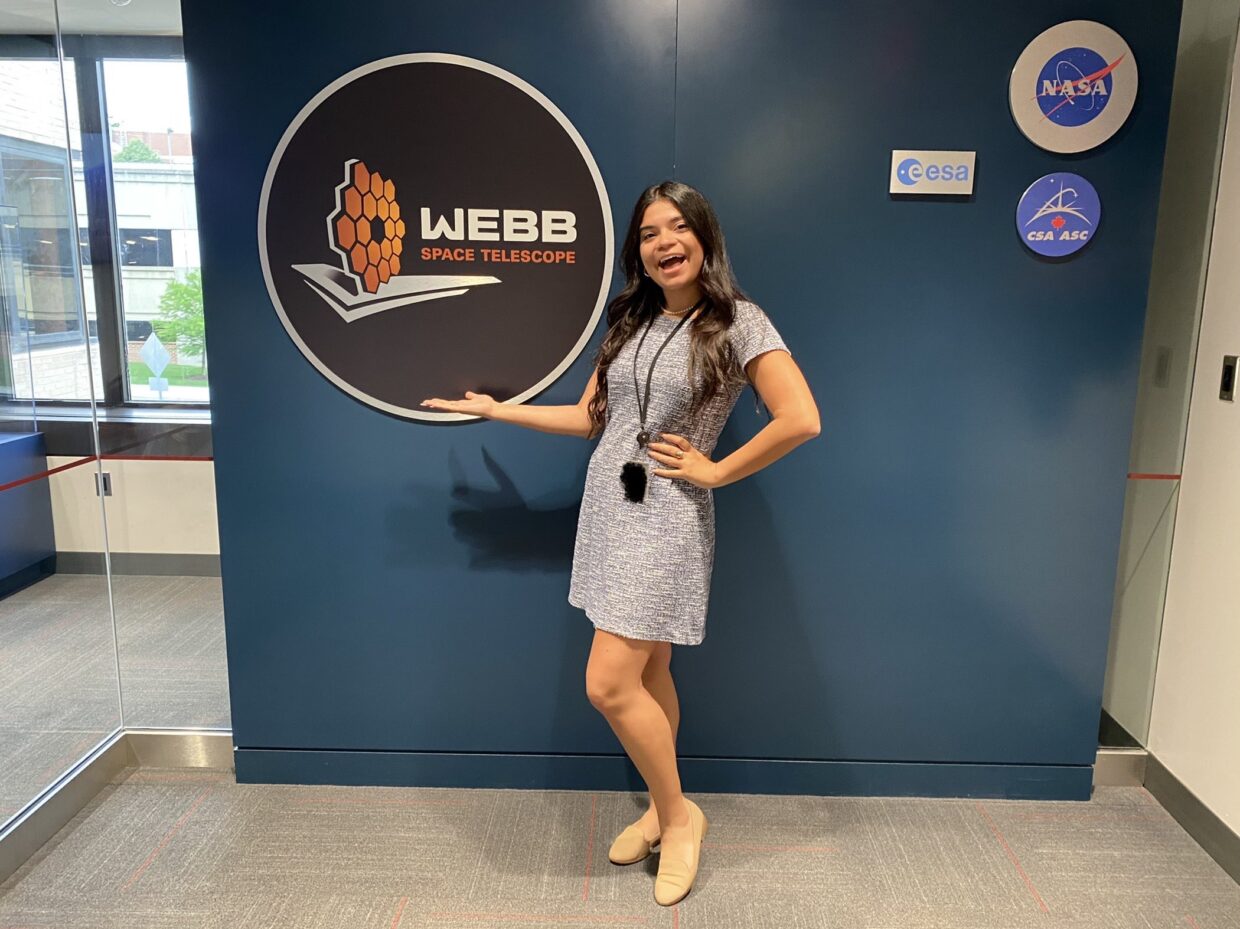👀 Sneak a peek at the deepest & sharpest infrared image of the early universe ever taken — all in a day’s work for the Webb telescope. (Literally, capturing it took less than a day!) This is Webb’s first image released as we begin to #UnfoldTheUniverse: https://t.co/tlougFWg8B pic.twitter.com/Y7ebmQwT7j
— NASA Webb Telescope (@NASAWebb) July 11, 2022
Their drop of the sharpest-ever image of galaxies from 13 billion years ago went viral nearly instantaneously, cueing millions in every niche of digital to express their awe in memes. And NASA’s James Webb Space Telescope social team followed suit. From making casual “Shrek” references in their tweets to throwing shade at other NASA accounts, they made sure to meet the moment. The now-iconic photo was just one component of their fun and unconventional campaign, #UnfoldtheUniverse. The team snagged a People’s Voice Win in Social during last year’s competition for reimagining the limits of how organizations can talk to audiences online.
We spoke to the team behind the captivating content to find out how they created one of the most successful social media campaigns of 2023. Read on to discover how they experimented with social to engage millions with each of Webb’s scientific breakthroughs.
How did the James Webb Telescope team develop the idea for the #UnfoldtheUniverse campaign? What did the process of developing the campaign and its elements look like?
There were multiple facets to the #UnfoldTheUniverse campaign – the updates about the telescope’s progress, the hashtag we devised to encompass it, and an art challenge of the same name.
The James Webb Space Telescope’s launch was just the first step. Our telescope is so big, it was folded into its rocket, and had to unfold in space after launch. That multi-step process took about 2 weeks. Then the telescope had to finish its million-mile journey to where it would orbit the Sun. After that Webb had to cool to cryogenic temperatures for its mirrors and instruments to be fully operational. All told, the process from launch to first full-color images and data was 6 months. Therefore, the campaign had to serve dual purposes of keeping people engaged over the long run, while still setting expectations that doing things in space requires patience.
We put a lot of thought into the #UnfoldTheUniverse hashtag. From our standpoint, we knew that we needed something catchy, easy to incorporate into copy, usable for the length of the campaign, and referenced what the telescope does and how. It was a tall order. Ultimately #UnfoldTheUniverse was the clear winner and we think our choice was really successful. We’ve even seen our Unfold hashtag on a Webb umbrella!
As for the art challenge, Webb has a history of inspiring the creation of art based on the telescope’s unique design. We expanded this into a campaign focused on the future the telescope will usher in by asking participants to create art of what they think the telescope will see. The #UnfoldTheUniverse art challenge resulted in over 300 (and counting!) submissions. Ultimately, we wanted a space for people to feel inspired to connect to this mission in a personal way, while also sparking curiosity for what’s out there. This campaign also allowed us to further build the bridge between art and science. There’s even an art aspect to the creation of Webb’s images, so we were also able to use this campaign to further educate the public about the mission.
From a casual “Shrek” reference to throwing shade at other NASA accounts, NASAWebb’s tweets are viral sensations. What inspires your social presence? What fuels your creativity?
As a group, we’re very…you might say too…online, and that really helps us keep our content fresh. We also come from pretty different backgrounds and have different interests, so we have a good idea of what memes and in-jokes are popular with crowds online. Then, we can act as a sounding board for each other, helping refine jokes to make sure they’re broadly relatable, or ensuring that a reference isn’t going to be misunderstood by someone who isn’t in the loop.
When the telescope was deploying exactly as it was supposed to, we felt like we had the space (pardon the pun) to be more playful and joyous with our posts. (Hence the “Shrek” and the shade.) There was a sense that we were living this nonstop, high-stress monitoring of something we had no control over with our audience, as the telescope deployed hundreds of thousands of miles away. We were all in this craziness together. In that spirit, we felt we could really have some fun with it, and the public really responded well.
Continuing that theme through today, we’d be remiss not to mention the telescope’s science itself. How can you not feel inspired when you open an email attachment of a gorgeous, awe-inspiring peek into our universe’s history?
What went into developing the voice for this campaign? How did the team decide on the final tone of NASAWebb’s Internet persona?
We’d say our voice is something like “your friend with the bad Dad jokes, pop music sensibilities, and a love of exploring the universe.” (Coincidentally, that also might be used to describe any one of us behind the account.)
This voice kind of developed along with the telescope as it transformed from a vision into a reality. When the telescope was still being built, our tone was mindful of the work that still needed to be done. But as the telescope began spreading its mirror wings, we started putting more of our own personalities into the copy.
The central idea behind our voice is making sure space is for everyone. We know firsthand how astronomy can be a really inaccessible topic, bogged down with technical jargon. There is something to be said about how a pop culture reference or meme can connect people to our images, stopping people from scrolling past. We’d say it makes the wonders of the universe relatable to those of us on our tiny little rocky planet.
We still try to strike a careful balance between having fun and being accurate. That’s really crucial for our voice: We want to be an accessible, lighthearted place for our audience to encounter science, but we have to back that up with precision. We usually try to get extra sets of eyes (often subject matter experts) on our posts to ensure we’re nailing the educational part. That gives us a little leeway to have fun with the tie-ins.
What are some of the apps and tools instrumental in bringing this campaign to life?
This campaign was the brainchild of colleagues normally on different teams, sometimes in different time zones, all juggling multiple plates, who came together for this herculean effort.
We used tools that allowed us to creatively brainstorm while staying organized and connected. We were constantly in touch through video conferences, DMs, and collaborative software. Nearly all of this campaign took place during heightened pandemic conditions. In a way, this benefited our workflow because the remote working infrastructure was in place, and also allowed us to be really time-efficient.
Because of these conditions, our actual launch day (Christmas Day of 2021) was a unique experience. Most of us worked the launch from home, in our pajamas, with cats on our laps. (We started our launch prep at 2 am, don’t @ us!)
We also tapped into the engagement tools available within social networks to interact directly with our audiences in innovative ways. For instance, we answered questions from our audiences and livestreamed key moments of the deployments process. These helped us to reach audience segments outside the space realm.
What audience were you aiming to reach? What about the campaign do you believe resonated with your target audiences?
We’re always thinking about the two kinds of audience members who might see our posts: the hard-core space fans who have been following Webb since the beginning, and the much more casual observer who might stumble upon a beautiful image and become engaged. The ultimate goal is to turn as many of the latter into the former as possible, but we also love our casual fans! And so we balance the serious science for the serious fans, while also making sure it’s accessible and exciting for the general public. Come for the Uranus jokes or not-so-subtle Taylor Swift references and stay for the groundbreaking science updates. This strategy seems to have resonated with both types of audience members.
Our social leads for this mission are women, and so we are really cognizant that there’s an existing image in mind when people think of NASA, and we consider it part of our job to challenge that. We try to showcase that all are welcome at NASA, and our different backgrounds, upbringings, and ways of viewing the world make our team stronger. We want young people who see our content to see themselves as possible astrophysicists and spacecraft engineers, but also to understand that it takes all kinds of jobs and thinkers to make something like the Webb telescope as we know it today…even social media managers.
Sorry for the shade, @NASASun, @NASAMoon & @NASAEarth! But you're just not cool enough 😎
Now fully deployed, our sunshield blocks your heat & light so that our mirrors will be able to detect faint heat signals in the universe: https://t.co/mggJkh6swO #UnfoldTheUniverse pic.twitter.com/qipAh45n6o
— NASA Webb Telescope (@NASAWebb) January 5, 2022
Could you share some fun facts or easter eggs about the campaign?
One easter egg is that our “shady” tweet isn’t the first time a NASA account has been blocked for science! Some of our followers recognized that Webb blocking the Sun, Earth and Moon on Twitter was sort of a callback to the @NASAMoon account blocking @NASASun as a demonstration of the 2017 total eclipse. (We had one team member who was part of developing both ideas!)
As for fun facts, we’ll say this. Nothing makes you feel like you “made it” as a social media manager as much as seeing your niche topic on other people’s tiny corners of the Internet. We’ve accumulated a cherished folder of screenshots of the memes you all have created.
One final thing: as we mentioned before, we’ve long had a connection between art and science on this mission. You might be interested to know that some of the artists we’ve highlighted also work here at NASA, like Wendy Edwards — who is an Earth Science Data Systems project coordinator and cross-stitches in her free time. We’re always looking to feature more Webb-inspired artwork, if you’re inspired!
What advice would you give someone just starting in the digital industry?
At this point, we’ve encountered our fair share of “social media intern” jokes. We’re sure you may have too! Of course they’re often well-intentioned, but they still can make it easy to overlook the efforts it takes to design and implement a strategic and engaging digital campaign. So the first piece of advice we’d give may sound cheesy, but it’s simply to know your worth. We have to keep advocating for the value of social media in communications, and that it takes talent, skill and hard work.
The other main piece of advice we have is to say your bad idea out loud. Not everything is going to work on social, but to do exciting, groundbreaking work, you have to go out on a limb sometimes. That means saying the weird idea out loud to at least one other person before dismissing it out of hand. You don’t have to pitch every dumb meme idea to your boss’ boss but find someone you trust and run your ideas by them. You’d be shocked how many of our biggest hits on social (throwing shade!) started out as dumb jokes.
That said, remember to keep in mind what you don’t know, and be thoughtful of all the communities and cultures that make up the Internet. Only by taking several perspectives into account can we do our best work, enjoyable by all.
“ To win this feels like we really were able to reach our audience, and that feels incredibly rewarding.”
What does winning a Webby Award mean to you?
Winning the People’s Voice was so meaningful to us. Everything we do is to bring our NASA mission to the public, to make the science and engineering behind the telescope feel personal and inspiring. To win this feels like we really were able to reach our audience, and that feels incredibly rewarding.
As social media managers for this mission, it’s also a gratifying moment to feel part of this telescope-making history. Thousands of engineers and scientists around the world worked tirelessly for two decades to bring Webb to life, and it’s an honor to be able to tell this story online.
This Week Is Your Final Chance To Enter The 28th Annual Webby Awards!
For nearly three decades, The Webby Awards has celebrated the best and most brilliant minds on the Internet. This year, we’re celebrating creatives who take the Internet a step further, through art, new technology, and impact.
Our Extended Deadline this Friday is your final opportunity to showcase the excellent quality of your work on a global scale and prove that you’re leading the curve across the digital industry.
Don’t miss it. Enter before this Friday, February 9th at webbyawards.com!









